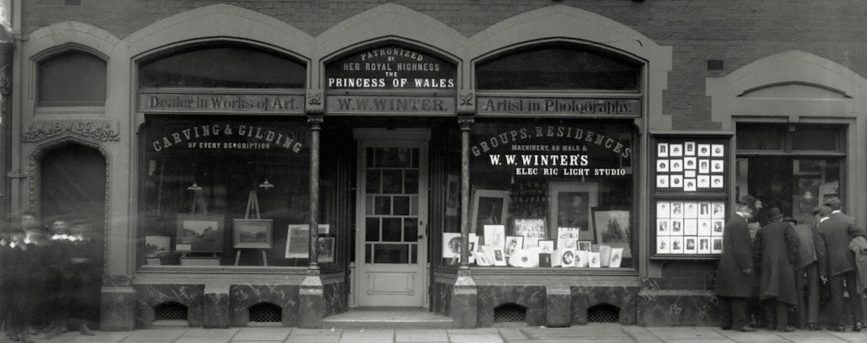Blog from Joanna – A Puzzle
I have been occupying myself with an interesting puzzle this last month. Whilst researching some other matter I reached for the Winter’s copy of Kelly’s Directory for Derbyshire for 1891 which I knew to be in the collection at the studio. Directories are a mine of information of the who, where, how and what of an area at the time. Whilst checking the names I wanted for my research I noticed that on the flyleaf at the back was a list of place names and dates all written in Mr Winter’s hand, a style I recognise from many hours of looking at glass plate negatives!
The dates are in chronological order between April and August of 1893. The seven dates in April and May are weekly, 4x Tuesday, 2x Monday and 1x Wednesday. There are no dates in June and July. The August dates are a Tuesday and a Saturday of the same week. Against the dates are a list of towns and villages – Clay Cross April 11, Winster, South and North Wingfield April 18. The places range from Hathersage in the north to Willesley near Ashby De La Zouch in the south.
What was this all about! I surmise that the list could refer to journeys undertaken by Mr Winter to photograph something. Could these places be reached in a single day and what was the subject. I checked the place names in the directory and found that they were all within a short distance of a railway station and they all with one exception (Pilsley) had a church. Inspection of the convenient map in the Directory showed that with planning and changing trains, the journeys could be made by train to include the places named in the group on the given date. The network of main and branch lines belonging to the Midland Railway and Great Northern Railway that criss-crossed Derbyshire at that time was amazing, enabling easy access to North/South and East/West travel. However, it was possible that journeys were made by horse and carriage.
So, what may have been the reason for going to all these places. There are a large number of prints and glass negatives of the exterior and interior of many churches in the collection and chance remark in some family correspondence revealed that Mr Winter was interested in photographing fonts. I will need to check in the archive and see if there are any prints and negatives of these particular churches and see if the negative numbers relate to the time.
Practicalities are that Mr Winter would have to carry a camera, tripod and a leather bag of prepared plates in their wooden holders, all very heavy. Did he take an assistant with him? This and other questions remain to be answered and there is more research to be done by looking at the negatives. It has been an interesting exercise and I will of course let you know if I find out more!
